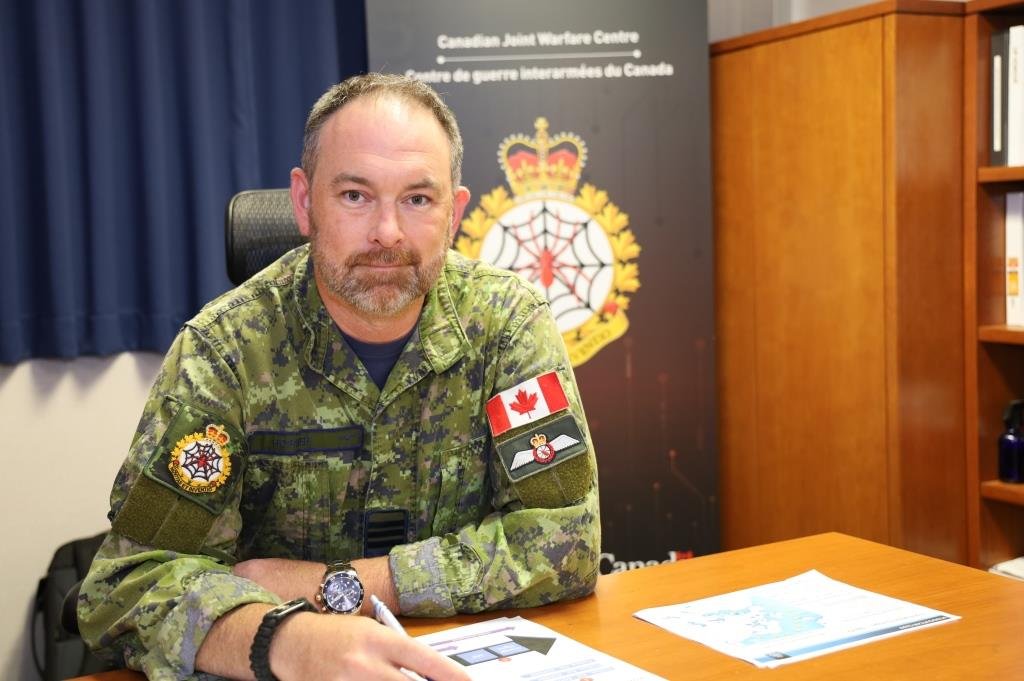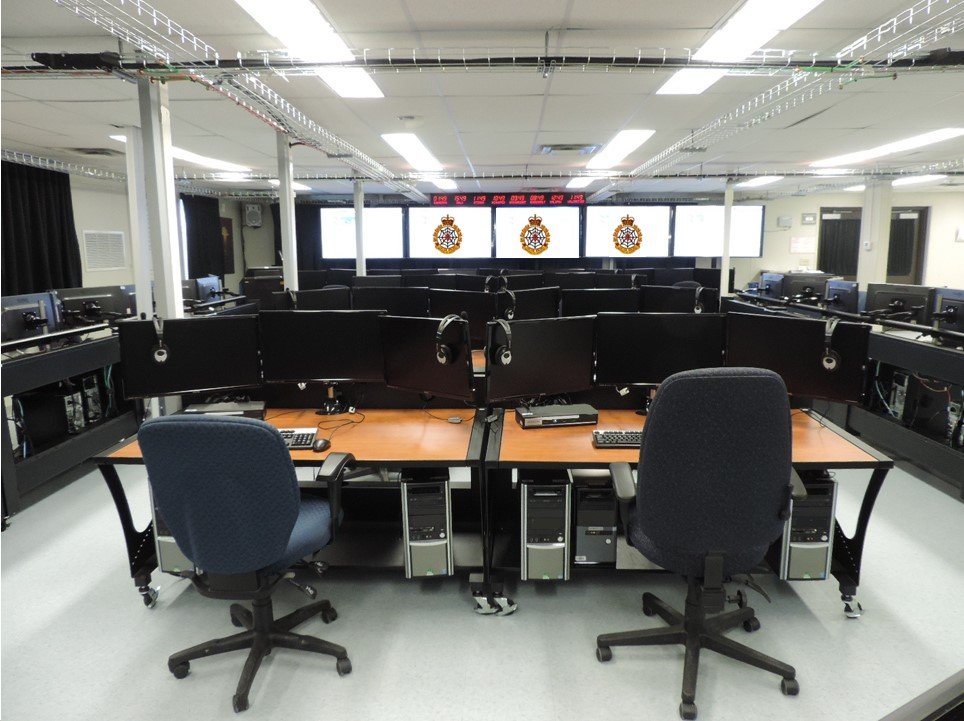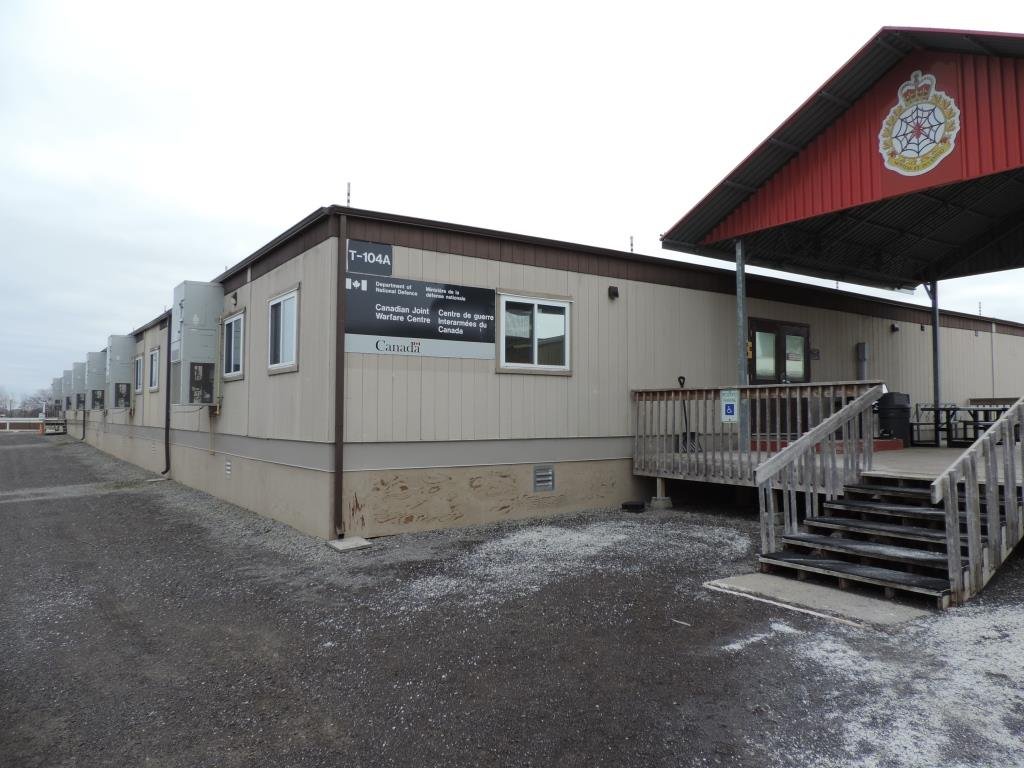JOINT FORCE TRAINING - Canadian Joint Warfare Centre
BY JOETEY ATTARIWALA
Canadian Joint Warfare Centre
Enabling a more capable and integrated Joint Force

CJWC came into existence on August 19th, 2019 and is located at the Shirley’s Bay Campus in Ottawa, Ontario. Previously, the CJWC was known as the Canadian Forces Warfare Centre (CFWC), and prior to that it was known as the Canadian Armed Forces (CAF) Experimentation Centre (CFEC) which was created in December 2000.
As a designated training authority, CJWC delivers courses on their own and are also working in cooperation with the Canadian Army Command and Staff College (CACSC) and the Canadian Forces School of Military Intelligence (CFSMI) to deliver courses in Ottawa and Kingston to support the Joint Training Capability (JTC).
The CJWC consists of the following sections: Joint Training Management; Joint Experimentation & Simulation; Joint Warfare Development; Joint Warfare Sciences; and Joint Research and Analysis.
To carry out its remit, the CJWC team employs critical thinking, seeks alternative perspectives, and performs rigorous research and analysis using a range of advanced technologies and techniques, validated by a scientific approach. The outcomes of these activities enable the creation and sustainment of a more capable and integrated joint force that will be better able to achieve operational effects across the full spectrum of conflict.
Colonel Christopher Horner is Commanding Officer of CJWC. Among his numerous accomplishments, the Colonel is a graduate of the Canadian Forces College Joint Command and Staff Program, and the United States Air Force Air War College.
HOW THE CJWC CAME TO BE
Colonel Horner described some of the unit's history in order to frame its current focus: “The history of the Warfare Centre is not a long one, and it's not incredibly storied. It’s really an organization that continues to try to find its place, and I say that not in a derogatory way. It came to be in 2000 when the Department realized it needed an experimentation centre working in the synthetic environment, and thinking about how we do joint experimentation and capability development. That was 23 years ago, and since then it's transformed its name and its purpose — it became the Canadian Forces Warfare Centre with the premise that it would be developing the future of the Canadian Forces, and it would be tying together the development of pan-Canadian Forces, or joint concepts, through concept development, experimentation, modeling, and simulation, and maybe training.”
Around 2010, the CFWC was looking to the future and the broader role of leading and enabling integrated capability for the development of some efforts. Those efforts focused on conducting better training, which formed the basis of JOINTEX, an operational and strategic level, whole of CAF computer-aided exercise which tried to train 200 - 300 people at a time.
In 2014 the unit was transferred from Force Development over to the Canadian Joint Operations Command to focus more on joint capability and operational preparedness. At that time, the CAF and its partners and allies were focused on a process broadly referred to as targeting — this is the process of developing intelligence around potential things the adversary has that can be targeted, whether kinetically or non-kinetically.
“It really goes back to a multi-layer process that the Canadian Forces needed to come up to speed with its allies,” Horner told CDR. “We were given that task in about 2017 to professionalize the targeting process and the targeting enterprise, and how do we bring together joint operations and intelligence to be able to create this new planning cycle that allows commanders to make decisions based on elements of the targeting cycle that have been developed to allow them to carry on with their mission. We did that for about five years, and we're still doing a little bit of that where we still hold residual knowledge as the centre of expertise in joint targeting, but for all intents and purposes, it's 80-90% inculcated into the Canadian Forces. There's some strategic level stuff that still needs to happen, but we’re adapted to that cycle of that planning process now.”
The appetite to conduct major operational or low strategic level computer-aided collective training has somewhat waned in recent years due to a number of factors, all of which are further challenged by the personnel shortages afflicting the Canadian Forces.
“Anyone who is a watcher of the CAF and national events recognizes we are short on people, and that we are short on certain capabilities that have either never been a requirement until now, or that have never really been part of our long-term thinking until more recent conflicts,” said Horner. “We're sort of at an inflection point where we’ve got to be very careful that we don’t mortgage our future to solve a crisis that is the here and now.”
HARNESSING NEW TECHNOLOGY 
From a Warfare Center perspective, Colonel Horner said that he is trying to “get to the future faster” to enable the Canadian Forces to be a credible fighting force with an efficient command and control capability that harnesses all of the new technology that is coming to the CAF over the next 10 to 15 years.
“We do that by looking at the people, the processes, the technology. How do we harness big data, and how do we start to have conversations around the use of ethical transparent AI in some of our operational planning?” said Horner. “The Canadian Joint Warfare Centre fosters the improvement of the joint force as an acceleration hub, if nothing else, through the application of analytical rigor, advanced war-gaming, innovative experimentation, significant academic research, and we're starting to do a lot of these things around the core of our Joint Operations Fusion Lab and multinational experimentation network, with the goal of making sure that a joint force and the Canadian Forces are ready to deter, and if deterrence fails, to beat the adversary in a multi-domain environment in the future.”
JOINT OPERATIONS FUSION LAB
The CJWC Joint Operations Fusion Lab is a catalyst for the improvement and transformation of Command and Control, Joint Intelligence, Surveillance, and Reconnaissance (JISR) and Targeting capabilities. The objective of the lab is to deliver modern operational solutions through informed thought analysis, trials, and experimentation. It is an engineering and integration lab that supports the evolution and interoperability of JISR within the Command, Control, Communications, Computers, Intelligence, Surveillance, and Reconnaissance (C4ISR) context, with the goal of eventually serving as the test bed for the National Defence Intelligence Operations Centre.
The network infrastructure that supports and enables the many objectives of the CJWC is the Canadian Forces Exercise and Experimentation Network (CFXNet). CFXNet is the network backbone which supports distributed exercises, collective training, capability development, experimentation, research and development, and modelling and simulation. CFXNet comprises 15 networks, providing up to Level II (SECRET) connectivity between 70 Canadian sites at 35 geographic locations, and with Canada's international allies and NATO partners via interconnections to the global Combined Federated Battle Laboratory Network (CFBLNet) and the US Joint Test and Experimentation Network (JTEN).
“We are definitely this trusted source of expertise and ideas. It’s not just the incredibly intellectually talented human beings who work here at the Warfare Centre, but it’s also the access to networks of scientists and operators and subject matter experts globally through whom we’ve established relationships over many years to be able to bring the best of the knowledge that’s out there to the Canadian Forces,” Horner told CDR. “While we may not be a huge group of people who are all experts in modeling and simulation, we certainly have access to a global community of practice across our partners and allies. It becomes this idea of being a central node of a joint knowledge ecosystem, with a concept of an integrated approach to improving CAF and DND processes, helping educate the joint force, promote joint integration, and enable efficient operational change — and doing that in an organization that doesn't love change and doesn't love risk. So, we’re met with this challenge of how do you create a safe to fail environment leveraging interaction and competition, through modeling and simulation, through experimentation. To use startup terminology, how do we fail fast?”
The challenge in front of Colonel Horner is that no Commanding Officer wants to go to their headquarters and say they failed at a task or effort, however one of his goals is to develop a culture where it is acceptable to do so.
“We don't necessarily have a culture that sees kindly towards failure. So, I'm working to challenge the institution in that space, to say that we have to be okay accepting smart risk that may lead to failure now at a small scale, than we are at implementing a 15 year program that we haven't really tested or trialed or iteratively innovated that may fail on a massive scale later. I look to the future as being a problem I'm trying to solve now so that the rest of the fighting force of the Canadian Forces and all its supporting elements can focus on the fight of the here and now, whether that's operations in Latvia, supporting operations in Ukraine, the training missions tied to Op UNIFIER, or the release of our Indo-Pacific strategy. I'm trying to figure out how to ensure we fight tomorrow from an operational command and control perspective in a way that is not wasting resources.”
Stay tuned for a future article which will speak to these efforts.
Joetey Attariwala is CDR’s Senior Staff Writer


